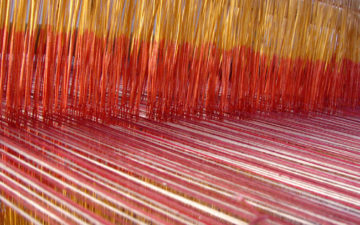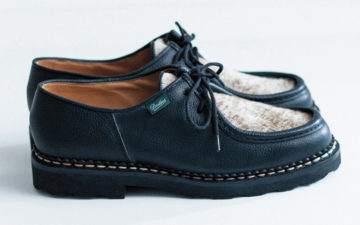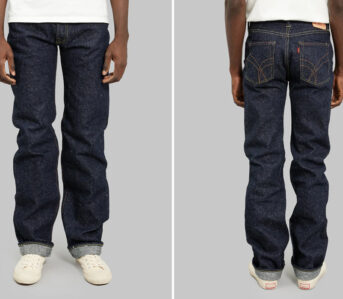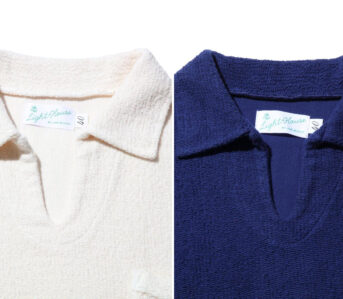Since the late 2010s, Korean menswear brands have been pervading the menswear world, leaving an imprint that is showing no signs of fading away anytime soon. It could be argued that menswear and fashion were in transitional places in the mid-to-late 2010s, especially in terms of streetwear and urban style. Japanese purveyors like WTAPS and Neighborhood had lost their buzz in the west, Nigo had left A Bathing Ape in 2013, Supreme was acquired by a large consortium — the tastemakers that the scene had relied on for so long were becoming somewhat stale and predictable. Folks were either gravitating toward more avant-garde offerings from brands like Needles and Kapital, a blend of neo-Ivy, Normcore, and workwear styles, or entering some sort of high fashion arc. Hard tech wear had also bedded itself into the urban zeitgeist in the mid-2010s, a sartorial matter that was potently compounded by the Pandemic.
In retrospect, the South Korean wave was, and still is, the effervescent tablet that the menswear world needed. It contains brands that fit anywhere in the menswear Venn diagram. Gorp, Techwear, Heritage and Vintage style, Widecore, Ivy and prep — you name it, there’s a South Korean label doing it. And doing it well, at an accessible price point.
In this article, we’ll be looking at some of the most prominent and exciting South Korean clothing brands, the ethical context of South Korean manufacturing, and potential reasons why these brands can operate at lower price points. If you’ve noticed the rise in brands from this part of the world and wanted to know more, this is the article for you.
Hallyu
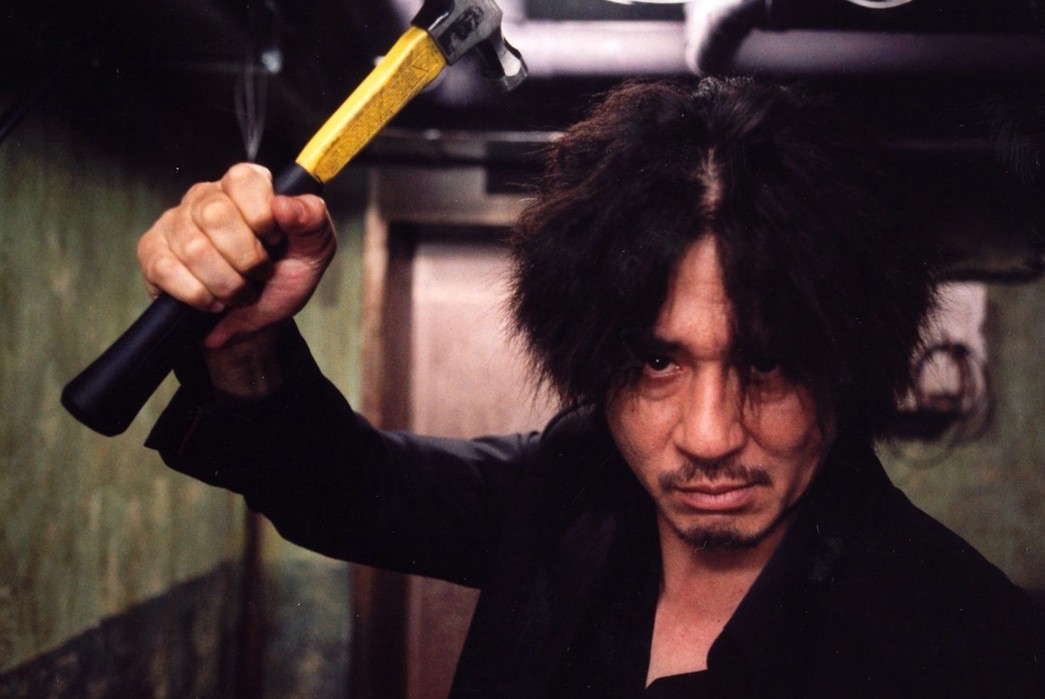
Oldboy still via iMDB
Hallyu is a Chinese term that translates to “Korean Wave”. This term refers to the growth of Korean pop culture encompassing everything from music, movies, and to video games, food, and fashion. Military censorship over the South Korean entertainment industry ended in 1997. Since then, South Korea has become a major player in popular culture not just in the Far East, but across the entire globe. PSY’s ‘Gangnam Style’ was a pivotal moment for Hallyu, with acts like BTS also pioneering the Korean Wave in terms of music, since. Films like Old Boy, Okja, and Parasite enjoyed big Western success, and Squid Game was nothing short of a sensation. 60 years after the end of the Korean War, it’s safe to say that South Korea has not only recovered, it’s become a tastemaker for media, the arts, and global pop culture.

Psy via uDiscoverMusic
While less obvious than Gangnam Style, South Korea’s fashion output has also been absorbed here in the West. Exciting brands with new ideas of styling and design have sprung up from the ever-growing nation, each with a unique offering that has captivated buyers, menswear enthusiasts, and streetwear heads alike.
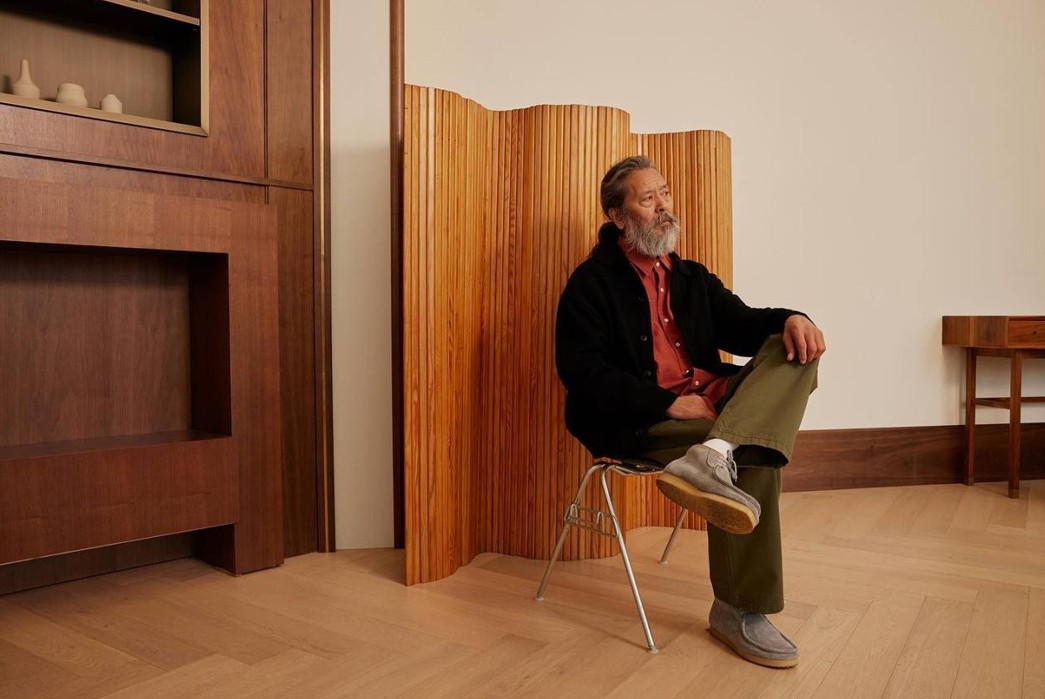
A shot from frizmWORKS SS23 lookbook
South Korean brands offer a wide range of styles, including hard tech-wear, Americana, heritage and military-inspired clothing, and streetwear, but a common thread between many South Korean labels is their penchant for wide, boxy silhouettes. Balloon pants, wide and cropped t-shirts with drop shoulders, as well as oversized sweatpants and jackets are all calling cards of the emerging ‘wide-core’ scene pioneered by some of South Korea’s most interesting labels, which we will explore later in this article.
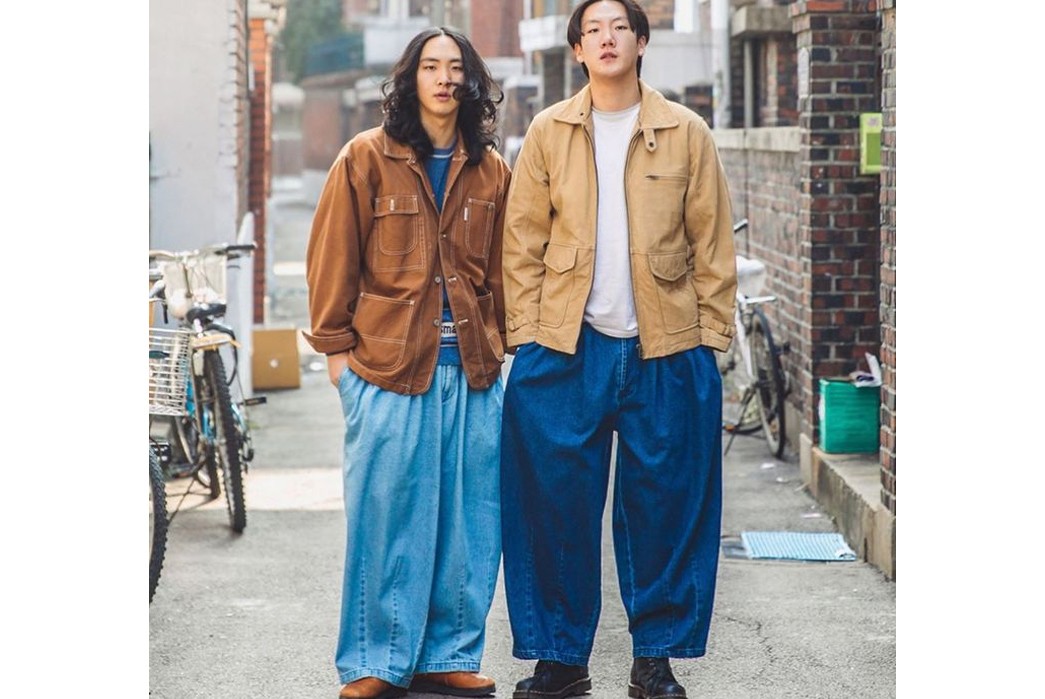
Some wide-core action via Anglan Korea
Wide-core refers to a fashion movement whereby all garments are wide, boxy, and oversized. Perhaps started by Japanese label, Needles, with their H.D. Balloon Pants – an exaggerated blend of the balloon jeans of the 90s and military-issue pants – wide-core exists as the antithesis tailored clothing, with wearers looking for extremely oversized, drape-y silhouettes that do not cling to part of the body. South Korean labels like Anglan, frizmWORKS, and Merely Made have all contributed to the wide-core scene.
But don’t think all South Korean labels make super-wide clothing, ‘cos that’s not the case. You’ll see later on in this article that there’s a South Korean label for almost any casual style out there. But first, let’s look at the pricing of this new wave of menswear.
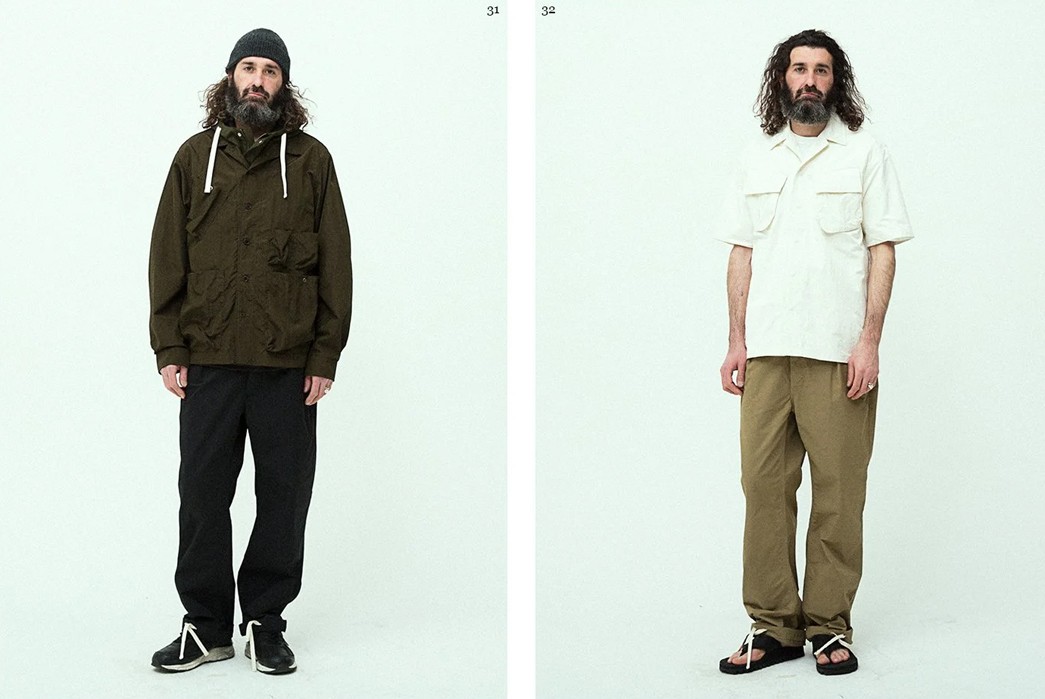
A Shot from Uniform Bridge’s SS2019 lookbook
Price Points
A factor that has undoubtedly helped bring a range of South Korean labels to the West is the price points. While not cheap, many South Korean labels offer comparable garments at a lower price point than premium Western or Japanese labels. Here are just a few examples.
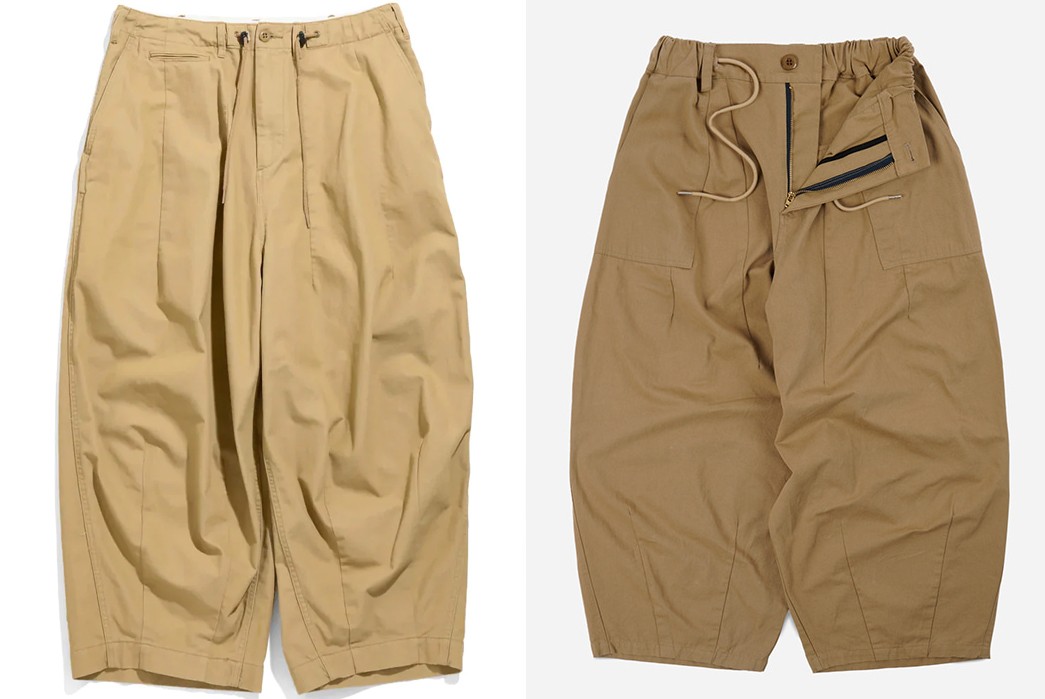
Needle’s H.D. Balloon Pant (left) retails for $275 at Hatchet Outdoor Supply, whilst Korea’s Frizmworks offers a similar pair, its Twill Cargo Ballon Pants (right), for $139 at Wallace Mercantile & Shop.
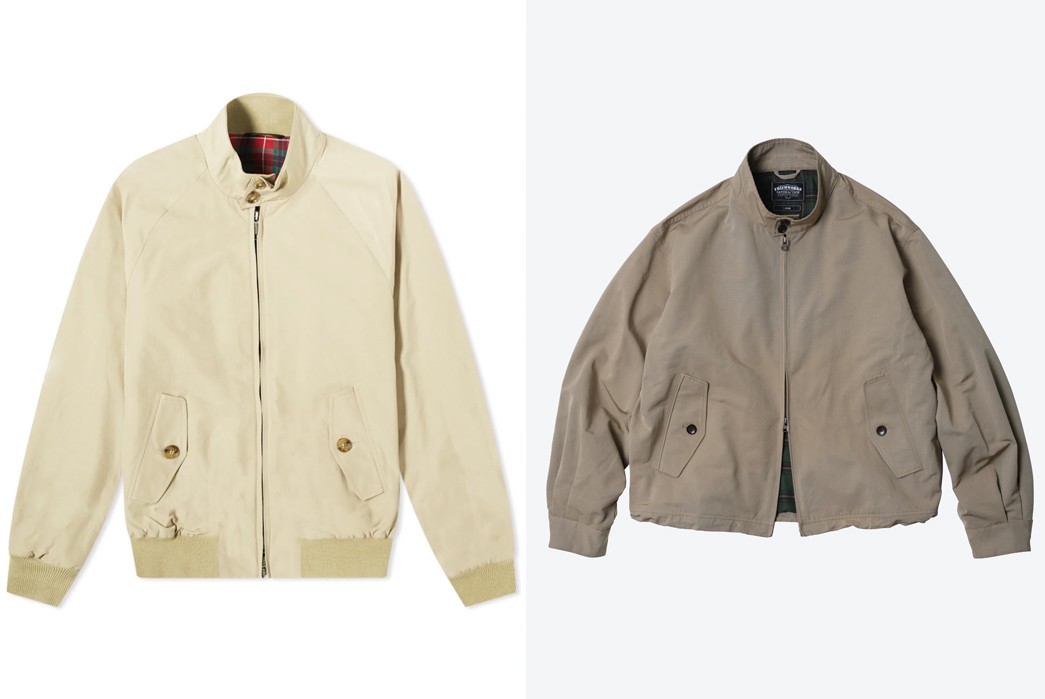
Baracuta‘s G9 (left) retails for an average of $370 as exhibited by END, but FrizmWORK‘s take, the Buddy Harrington (right), is available at Wallace Mercantile & Shop for $201.
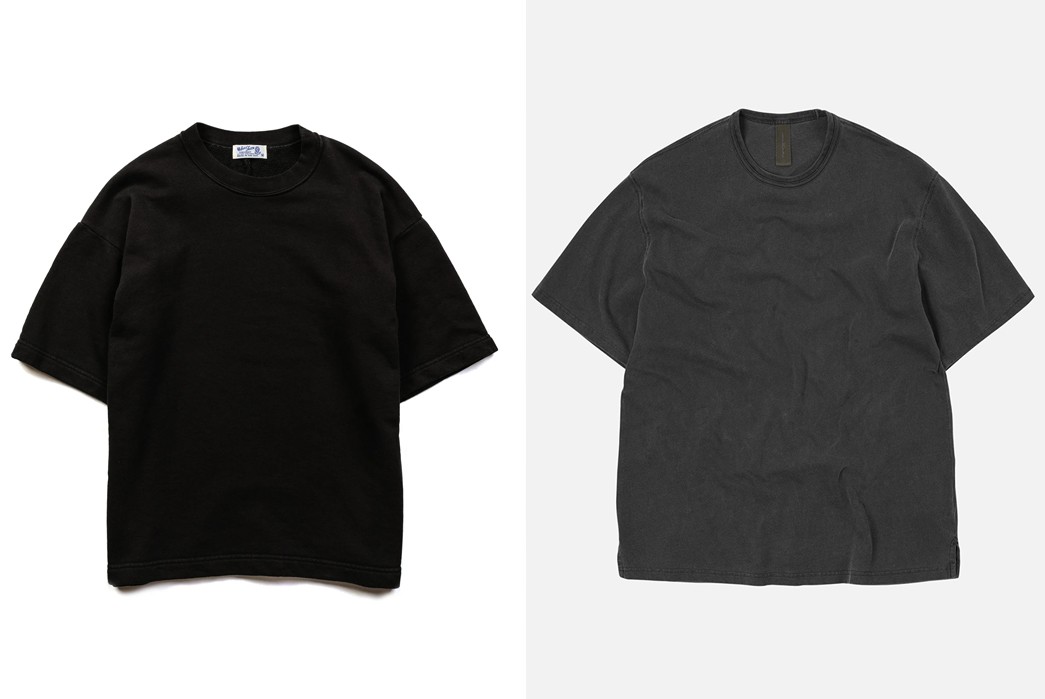
Velva Sheen Pigment-Dyed Big Tee (left) is $102 at Lost & Found, while FrizmWORK’s OG Pigment Dyeing Tee (right) is $72 at Wallace Mercantile & Shop.
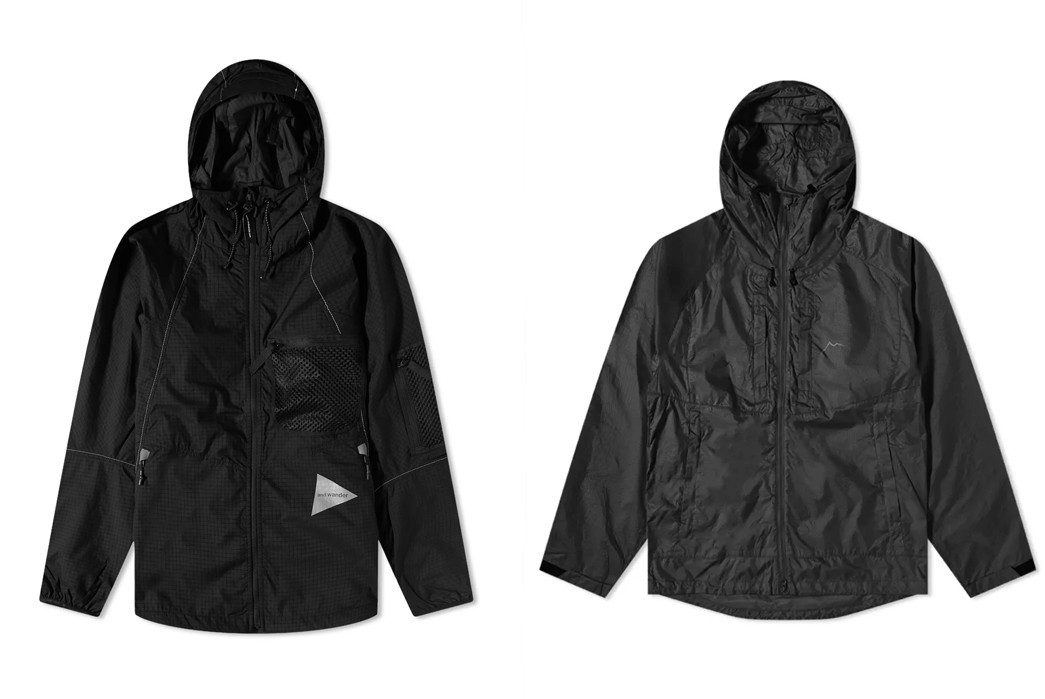
and Wander Breathable Ripstop Jacket (left) is $385 at END, CAYL‘s Ripstop Nylon Jacket (right) is $149 at END.
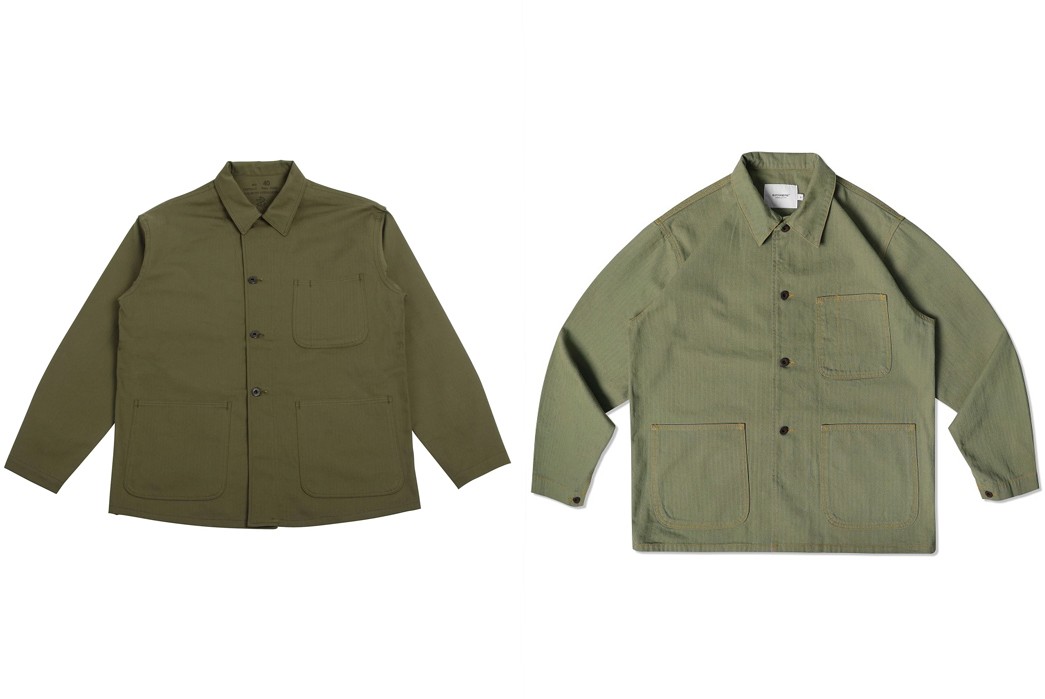
The Real McCoy’s MJ22012Utility N-3 Jacket (left) is available for $296 at Lost & Found, whilst Outstanding & Co.‘s comparable HBT U.S.N. Jacket (right) is $129 (excl. sipping from SK) on the Outstanding & Co. webstore.
There isn’t a one-size-fits-all answer as to why South Korean brands can offer comparable clothing at better prices, but a few contributing factors are:
- South Korea is a manufacturing superpower with around 30% of the economy being powered by manufacturing. With so much competition to win manufacturing contracts, factories can offer to make garments at competitive prices.
- Garments can also be holistically made in South Korea, from fabric milling to trims. This helps to cut down on overall supply chain costs.
- South Korean brands tend to deal directly with vendors and not with intermediary agents, which reduces the overall cost of getting products to market in the West.
Made in South Korea
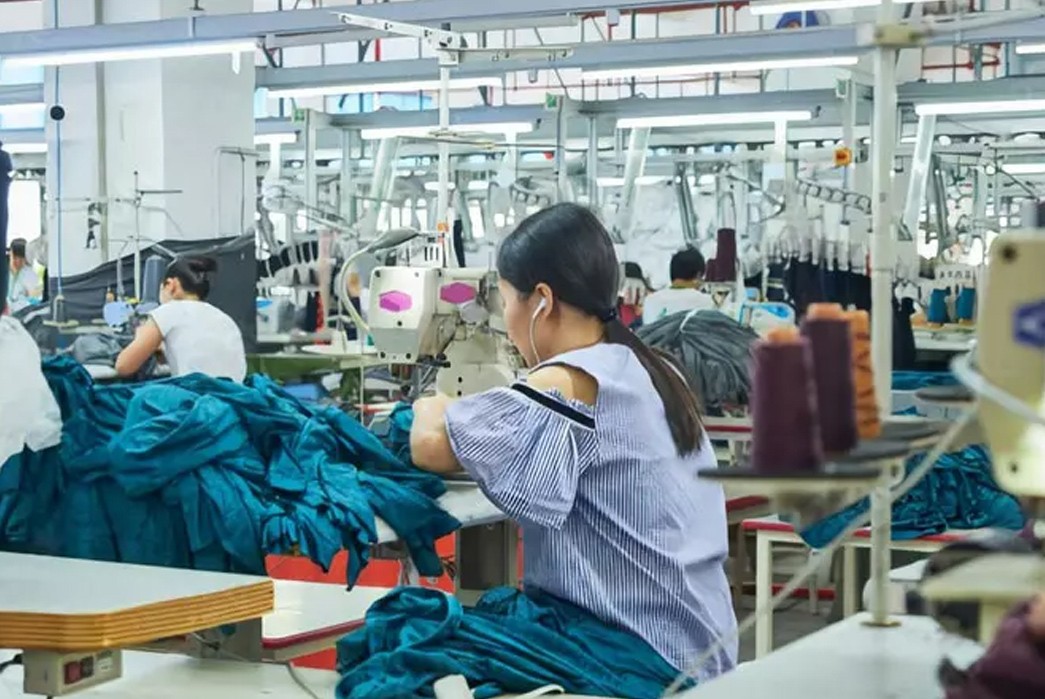
Image via Kkami
The lower price points of some Korean labels can potentially be partially attributed to the fact that many of the garments are made in South Korea. But unlike apparel and textile exporters in developing areas of Asia, South Korea is a well-developed country with less poverty, more infrastructure, a social security system, and seemingly better working conditions for garment workers than some large textile exporters.
At the time of writing, South Korea has the 10th largest economy in the world and many surveys and statistics suggest that the country’s education system is in the top 20. Garment workers in South Korea do earn around 37% less than the average country’s salary * but compared to a country like Bangladesh where garment workers can earn something equivalent to $15USD per month, there isn’t a clear and pertinent issue when it comes to garment worker pay in South Korea today.
*(the average salary in 2022 being ₩46,600,000 according to Salary Explorer, average garment worker salary is ₩29,044,011 according to Salary Expert)
South Korea’s Historic Labor Rights Issues
Whilst there have been significant improvements in labor rights in South Korea, it is important to acknowledge that up until the late 80s, the country was notorious for having poor conditions for garment and textile workers — and there are still some pretty serious issues facing those workers today.
South Korea had become one of the world’s poorest countries by the mid-1950s, suffering gravely in the wake of the Korean War, In an attempt to prop up the country (with the payback of cheap imports), the US bankrolled the South Korean industrial industry, including textile and garment manufacturing. This investment spawned a new breed of industrialists who essentially exploited millions of vulnerable and impoverished Koreans who were unprotected by the nation’s then-flimsy labor laws. Textiles led this tainted industrial boom, which saw South Korean exports grow from $30m to $1b in less than a decade.
Seoul Peace Market
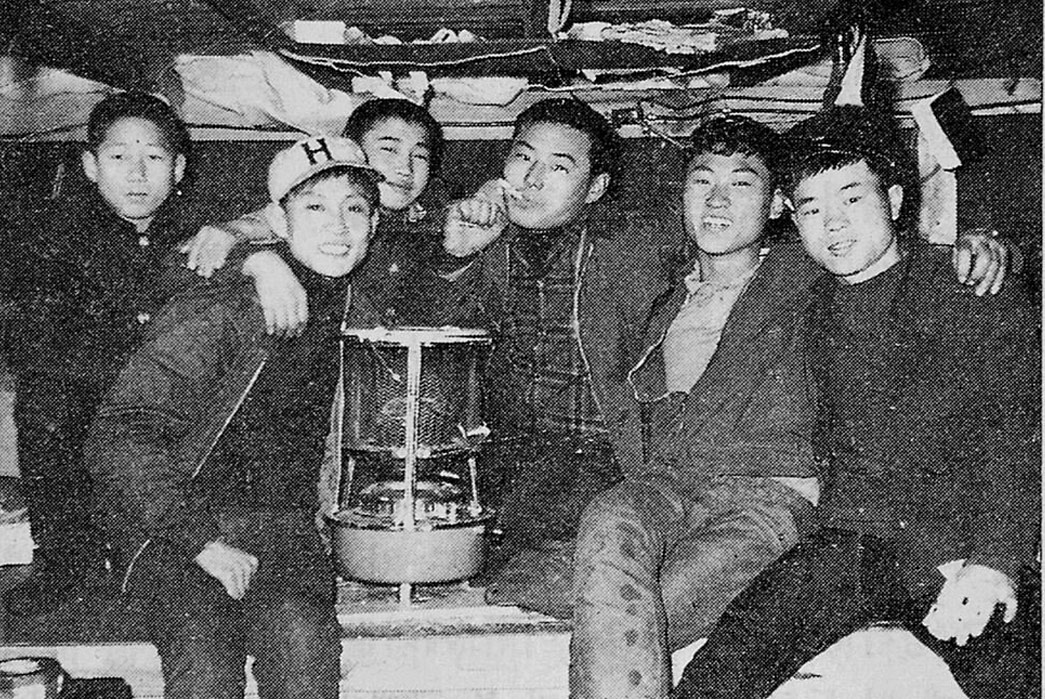
Jeon Tae-il (far right) and company. Image via Hueng Coalition.
The issue of South Korean labor rights reached a boiling point in 1970. Seoul Peace Market (서울평화시장; Seoul Pyeonghwa Sijang) was an area in Seoul known for being full of sweatshops and other crowded garment-working set-ups. On November 13th, 1970, Jeon Tae-il, a Korean worker and workers’ rights activist, committed suicide by burning himself to death at Seoul Peace Market in protest of the poor working conditions in South Korean factories. He was just 22 years old.
Jeon began his quest to improve labor conditions in South Korea when he experienced the stomach-churning conditions faced by garment workers in Pyeonghwa (Peace) Market garment factories. Bacterial infections and illnesses such as Tuberculosis were tearing through the population of workers — some aged 14 or below — who were expected to work 7 days a week for less than a dollar a day. Jeon looked into the Korean labor laws, organized the country’s first Garment Worker’s Association, and even surveyed workers in the Pyeonghwa Market factories for a petition he submitted to the Ministry of Labor.
Jeon’s findings and petition fell on deaf ears, but his final actions would change the face of South Korean labor rights forever. At a peaceful demonstration at the Pyeonghwa Market, Jeon pushed to the front of the crowd, set himself alight, and burned himself to death. As he was on fire, he yelled phrases like “We are not machines!” and “Comply with the Labor Standards Act”.
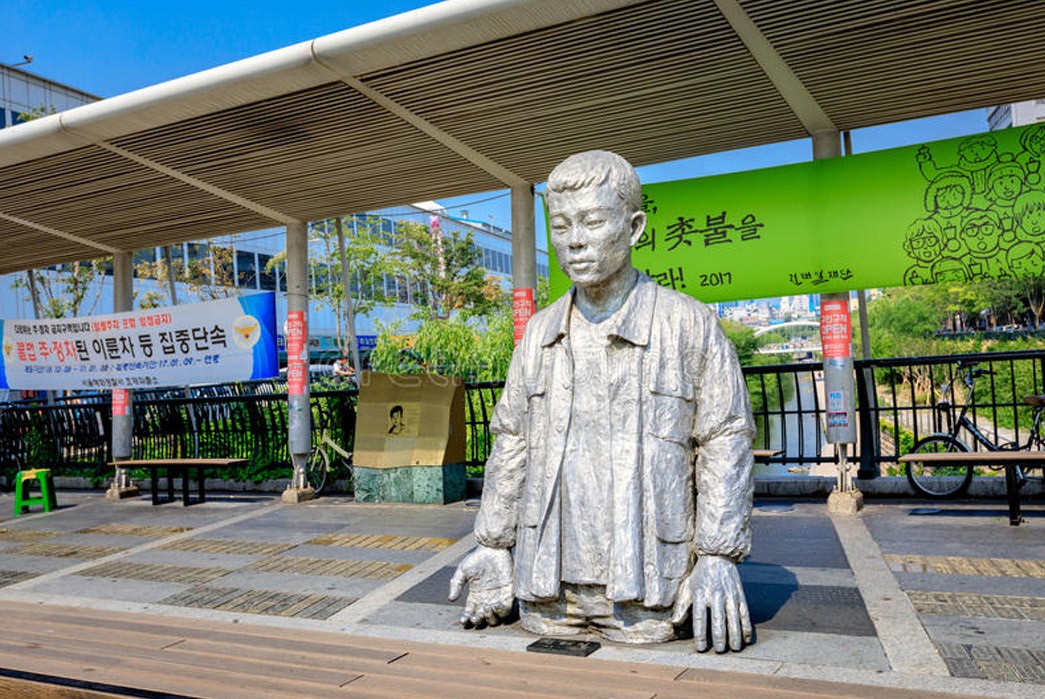
A statue of Jeon Tae-il on his commemorative bridge in Seoul, the Jeon Tae-il Bridge. Image via Dreamstime.
Jeon’s death was far from in vain. His legacy galvanized the garment workers of Seoul to continue fighting for their rights. In 1971, just 1 year after Jeon’s passing, the first South Korean Garment Worker’s union was founded at the Seoul Peace Market. The majority of those fighting for labor rights were women and girls, including Jeon Tae-il’s mother, who had been working in garment factories for years.
The Labor Standards Act of South Korea has since been intermittently amended, with major amendments in 1997 and 2018 on reasonable working hours, overtime, employment definitions, and more. South Korea also introduced the Minimum Wage Act in 1986, which of course applied to garment workers.
South Korea’s Current Labor Rights Issues
Whilst labor rights for garment and textile workers have been slowly improving since 1970, there are still some major issues facing the workforce. Up to half of South Korea’s workforce are ‘irregular workers’ (zero-hour contract) who remain unprotected by many facets of labor law, a loophole often exploited by industrial employers. South Korea is also the worst culprit of gender pay inequity among OECD countries, an issue that will undoubtedly face the garment/textile workforce.
Another pertinent issue facing South Korea is the dwindling workforce count. As the nation continues to grow and thrive, younger people have been reluctant to take up blue-collar jobs in industrial settings. This has forced employers to hire migrant workers from less developed areas of Asia. Like the aforementioned ‘irregular workers’, these migrants are not protected by the South Korean labor laws. This opens the door to exploitation, but from the research I have conducted, migrant workers in South Korea are suffering mostly in agricultural settings, and are anecdotally aiming to work within garment/textile environments as they are known to provide better working environments.
All of the above information means that it’s difficult to say whether or not a garment from any of the South Korean brands listed below is the end product of questionable or immoral labor practices. Without a high level of transparency, we don’t know who is putting these garments together, and that same issue applies to many products we purchase on a daily basis. It seems that, as a whole, South Korea has improved its labor practices since the death of Jeon Tae-il, but there’s some way to go in installing watertight labor laws that underpin a successful and thriving workforce. The same could be said for garment workers in many developed areas of the world, though, and at least South Koreans have unions and the right to peaceful protest, both of which can aid change.
Key Brands
Document
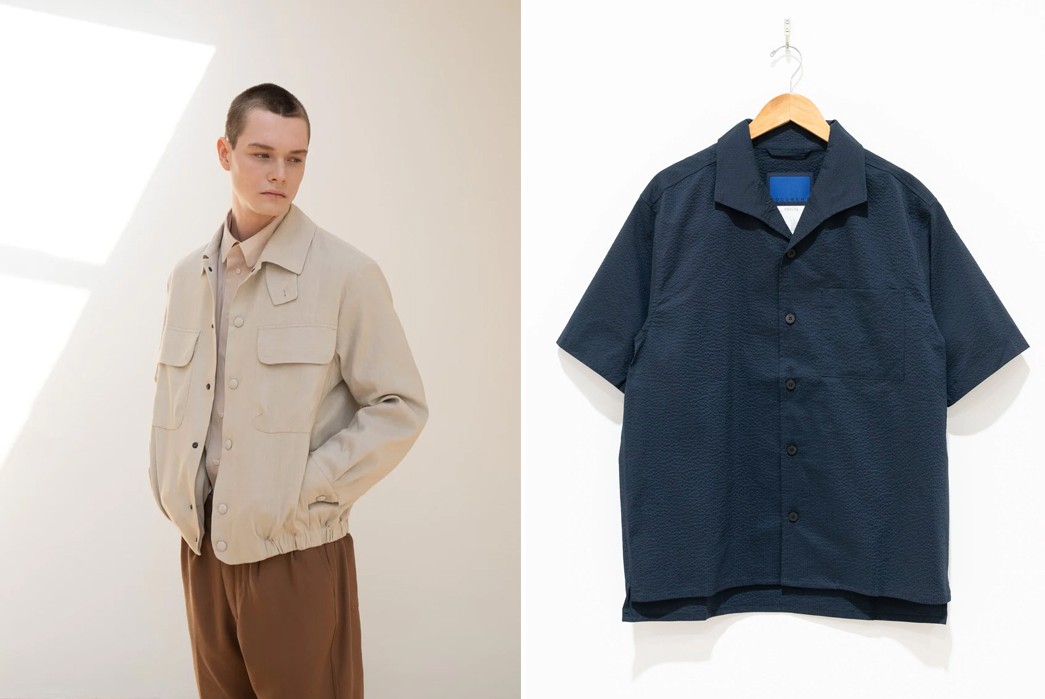
Document Linen CPO Jacket, $505 at Namu Shop, and Document Seersucker Handkerchief shirt, $260 at Namu Shop.
Born in 2014, DOCUMENT is the work of its founder and head designer, Jongsoo Lee. Inspired by a quote by French philosopher Gilles Deleuze, “repetition of subtle differences,” — it’s subtle differences that DOCUMENT does so well. The Seoul-based brand has a knack for taking an iconic silhouette and elevating it with a modern, often relaxed cut, and a premium, unique fabric.
All garments are made in Korea, but Document sources many of its fabrics from other countries including Japan and Italy.
CAYL
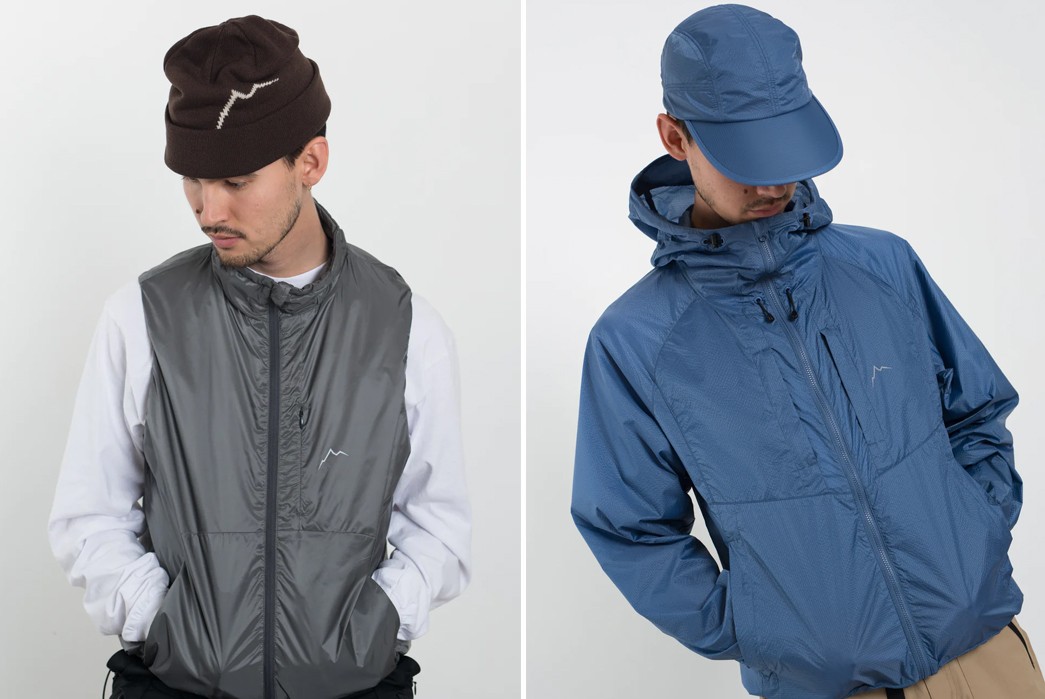
CAYL Logo Beanie and Ripstop Jacket, available for $44 and $174 respectively from Calculus.
South Korea has a strong techwear and gorp presence within its fashion output, and among those leading the charge is CAYL. Founded in 2011, CAYL is centered on its founder’s love of the outdoors, specifically climbing and mountain sports, leading to a considered collection of attractive Korean-made activewear that fits into life both on the rock face or the sidewalk. Ripstop, Pertex, technical fleece, Primaloft, and a host of other performance materials help form a roster of technical apparel, accessories, and equipment.
Outstanding & Co.
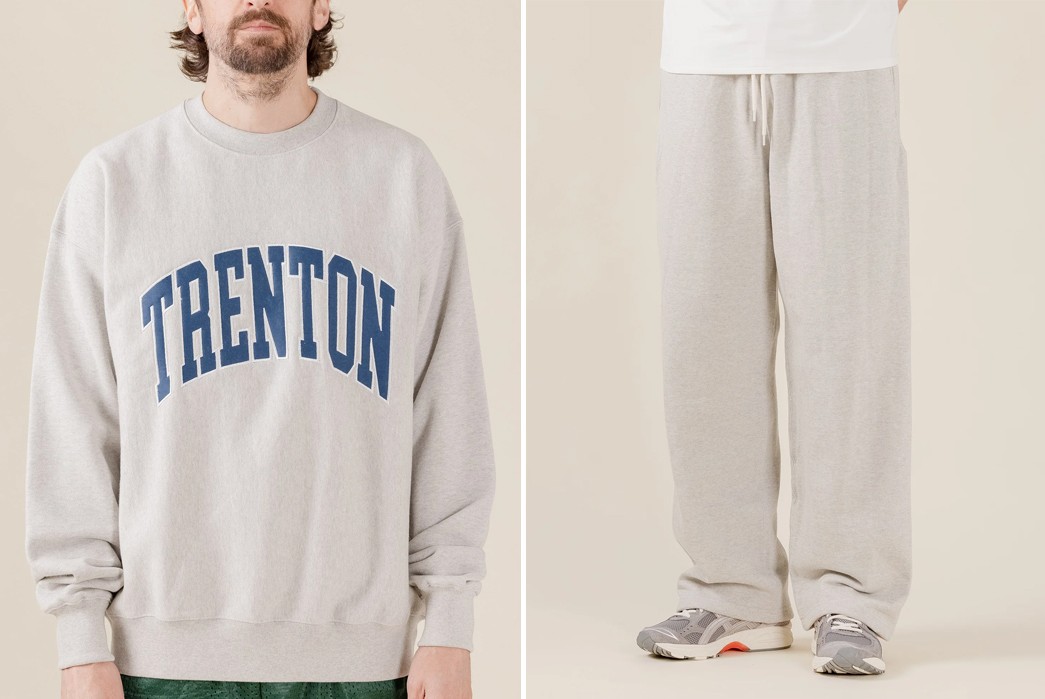
Outstanding & Co. Trenton Heavyweight Reverse Weave Sweatshirt & HEavyweight Wide Sweatpants, available for $102 and $106 respectively from This Thing of Ours.
Outstanding & Co. is the South Korean label for Americana casual garb. The brand has been going for over a decade, and while it started producing mainly American heritage wear, its line has now expanded to offer a wide range of reverse weave sweats, graphic tees, and garments inspired by the American outdoors boom of the 1960s.
For inspiration, the brand looks to workwear, military, bike, outdoor, and vintage clothing of the 20th century, before tweaking and expanding on stalwart silhouettes to offer something new and fresh. Outstanding even develops its own proprietary fabrics in South Korea, Europe, and other areas of Asia, to ensure original and ‘outstanding’ products.
Anglan
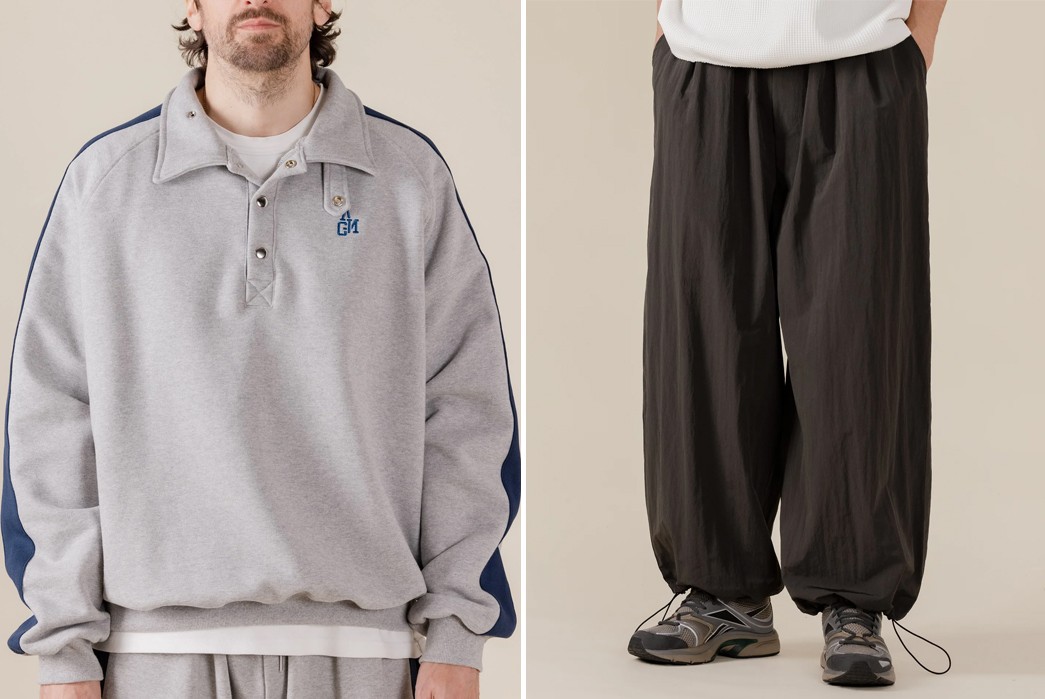
Anglan Two-Tone Loose Sweatshirt & Nylon Ripstop Loose Pants, available for $107 and $128 respectively from This Thing of Ours.
One of the proprietors of Wide-core, Anglan is a contemporary label that puts out wide and loose garments that draw upon influences from Americana, military garb, workwear, and athletic wear. As well as offering progressive and unique silhouettes, Anglan often releases its garment in one size, eliminating bias or expectation when it comes to gender and size.
frizmWORKS
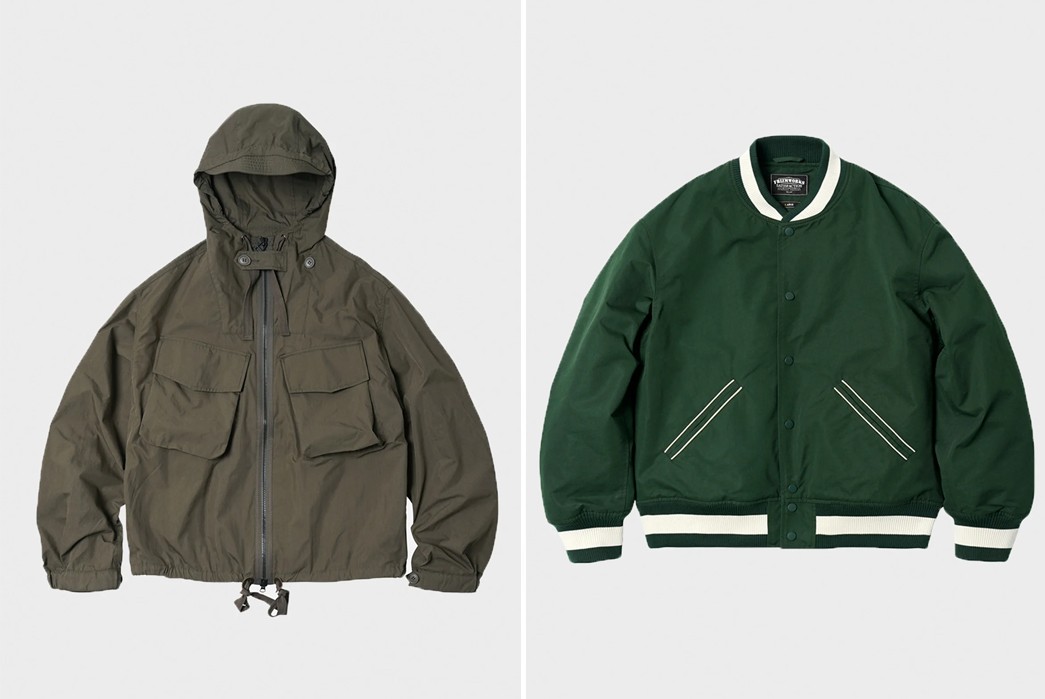
frizmWORKS Smock Hooded Parka & Cavalry Twill Varsity Jacket, available for $205 and $195 respectively from Canoe Club.
frizmWORKS was founded back in 2010 by An Jong Hyuk. It’s only been available in Europe and North America for around 4-5 years, being exclusive to South Korea beforehand, but has since become one of the most respected South Korean labels within our niche.
Eastlogue
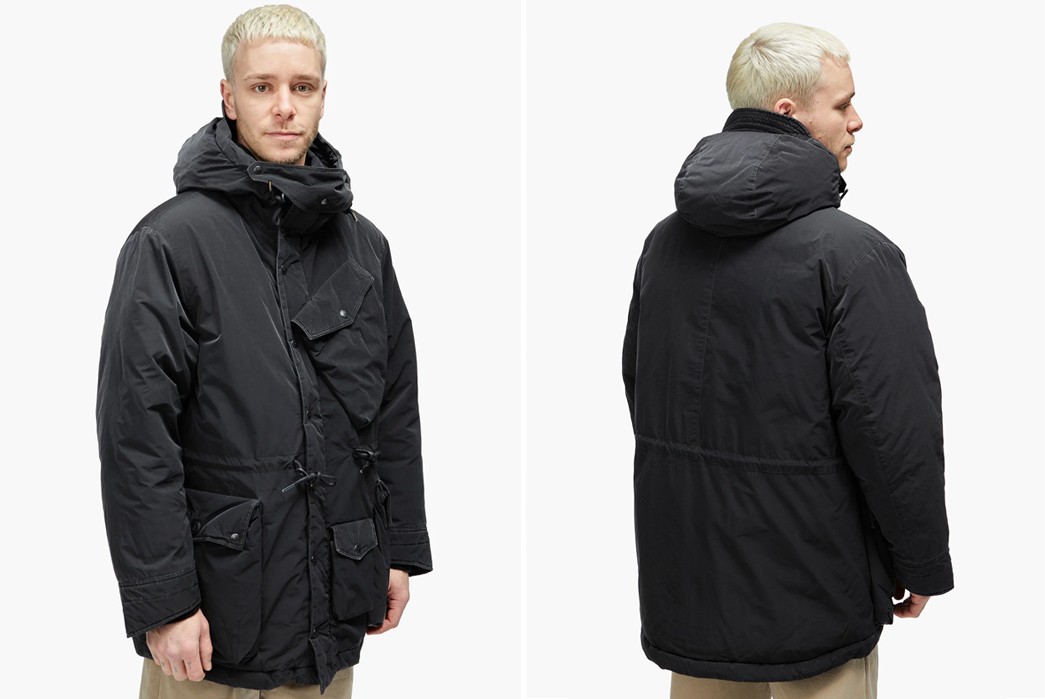
Eastlogue Utility Shield Parka in Pigment Black, $647 from Cultizm.
Ask many heritage clothing enthusiasts about South Korean labels, and it’s likely that Eastlogue will be one of the first brands they cite. The brand was founded in 2011 by Dongki Lee who wanted to produce traditional Western clothing through the South Korean lens, but it has since grown into a powerhouse brand that continues to impress year after year with its range of idiosyncratic garments that reference military and workwear clothing from across the globe.
Big Union
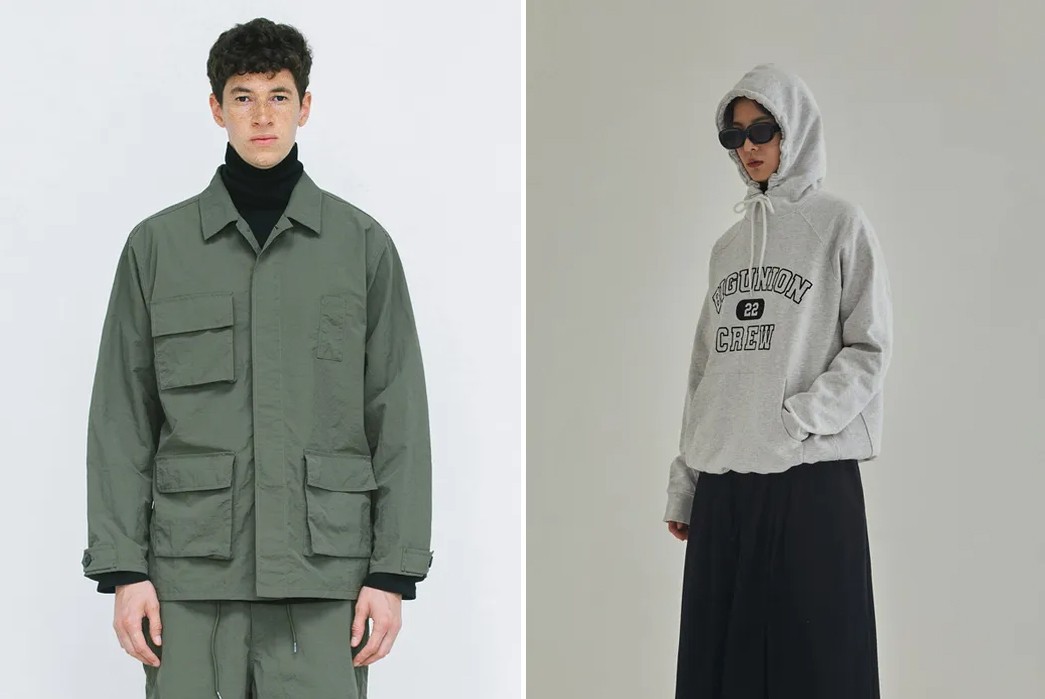
Big Union Nylon BDU Jacket & 16 oz. Heritage Logo Hoodie, available for $120 & $59 respectively from W. Concept.
Big Union is one of the newer brands coming out of South Korea. Taking influences from a range of sartorial sources, the brand gravitates towards American silhouettes from the mid-1900s, adapted for the wide, relaxed, and progressive urban style of South Korea.
Merely Made
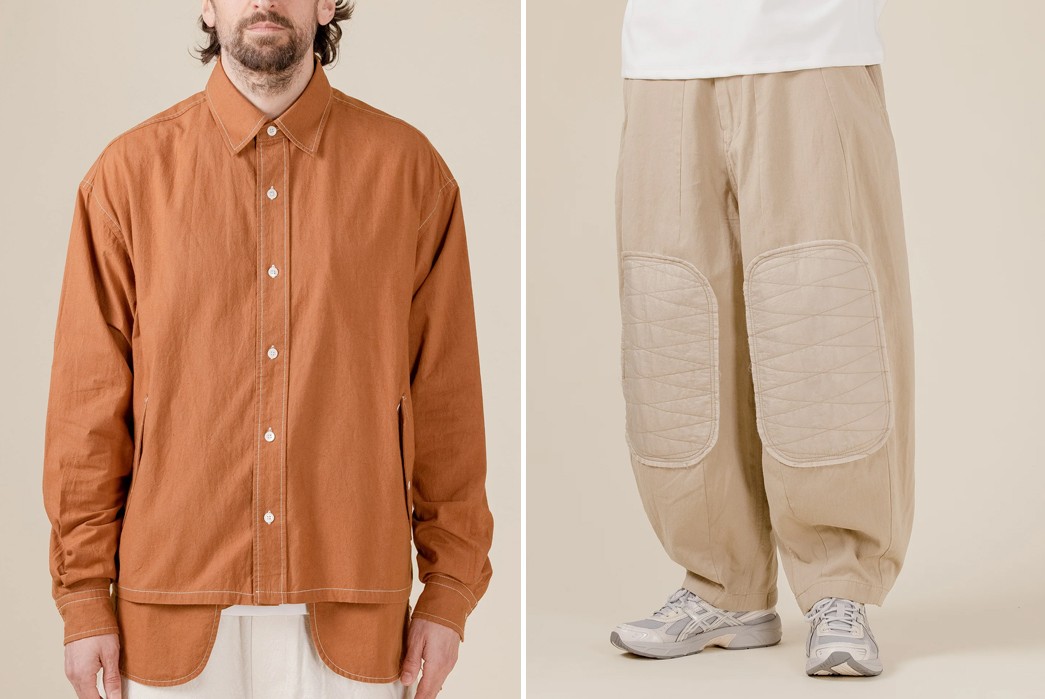
Merely Made Vintage Nap Cropped Overshirt and Quilt Detsisl Nomadic Pants, available for $225 each from This Thing of Ours.
Founded in 2018 by Hong Loco, Merely Made is one of the youngest Seoul-based labels in this guide. Operating with the simple brand mantra of “a well crafted piece of clothing”, Merely Made balances innovative design and fabric choices with a focus on high-quality manufacturing. Despite being forward-thinking, Merely Made’s garments have a classic touch to them that keeps things down to earth and wearable.
thisisneverthat
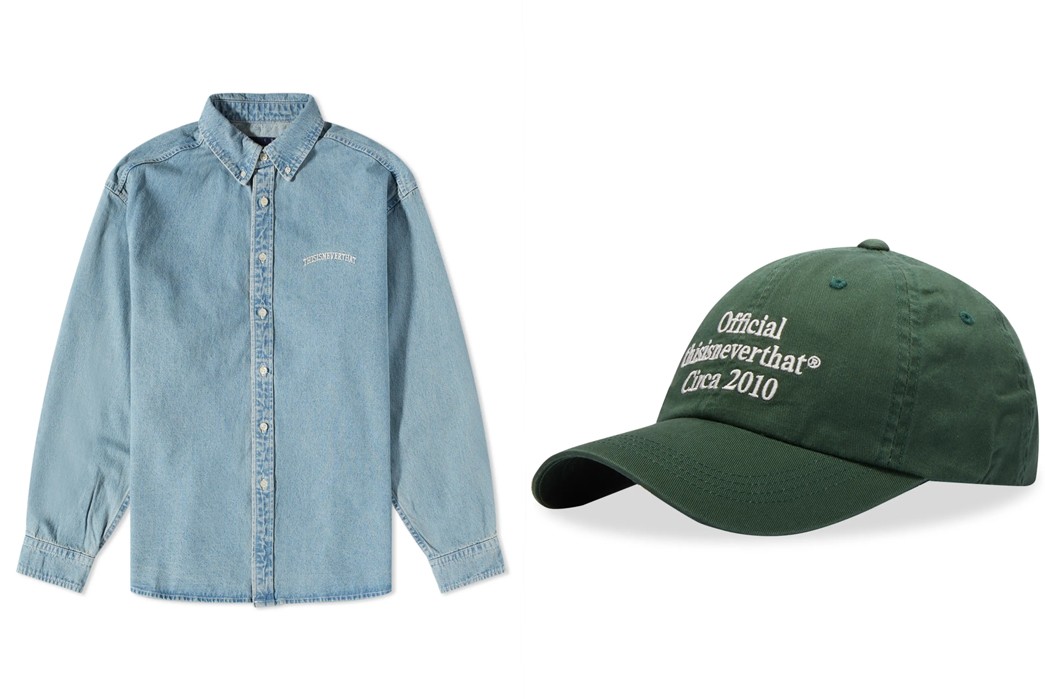
thisisneverthat Washed Denim Shirt, $125 at END & thisisneverthat Times Cap, also available at END for $49.
Often dubbed as South Korea’s answer to Supreme, thisisneverthat is a pure streetwear label from Seoul. Whilst potentially not hitting the Heddels criteria in terms of build quality, it is important to be aware of thisisneverthat as the brand grows more relevant with each season. It outsources a lot of production to China, but the quality of its garments can be compared to the likes of Stussy and Supreme.
Welter Experiment
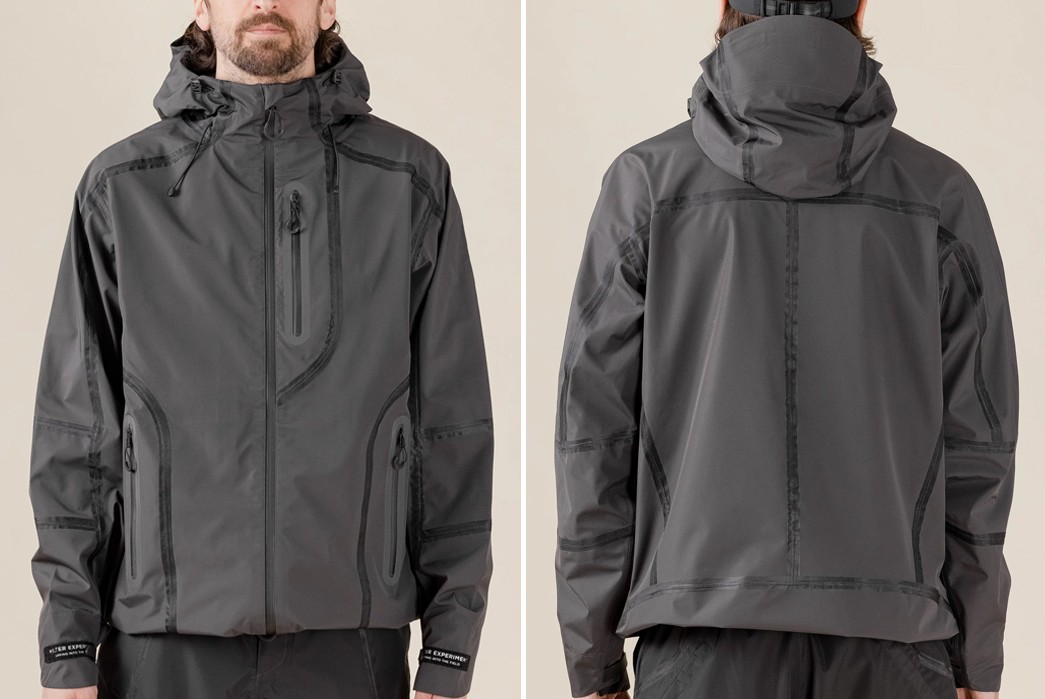
Welter Experiment WOL023 3Layer Taped Seam Hooded Shell Jacket, $444 from This Thing of Ours.
Hailing from Seoul, Welter Experiment was established in 2021 by UrbanCity Co and creates innovative and technical outdoor wear that slots into the modern wardrobe with ease whether you’re braving a rainy hike or a drizzly commute.
*A special thanks goes out to Nodutdol, an anti-imperialist organization whose tweets were invaluable in my research about Jeon Tae-il and South Korean Labor Rights

